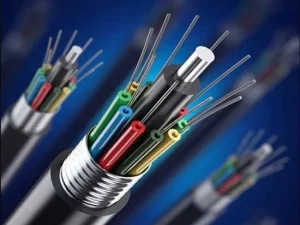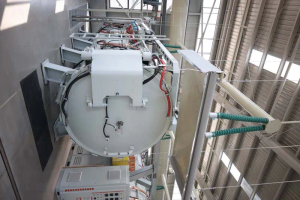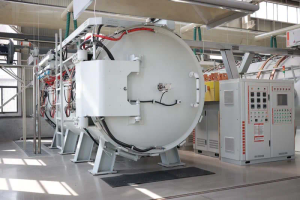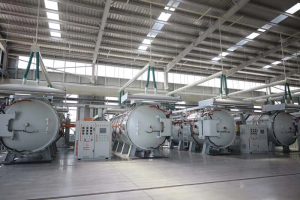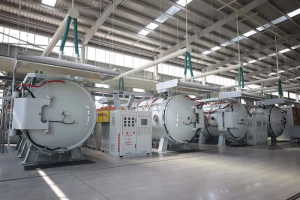Knowledge of indexable cutting tools
1. The basic concept of indexable tools
Indexable tool is a kind of tool which is a pre-machined polygonal blade with a number of cutting edges and is clamped on the tool body by mechanical clamping method. When a cutting edge is blunted in the process of use, as long as the clamping of the blade is loosened after the rotation or replacement of the blade, so that the new cutting edge enters the working position, and then the clamping can continue to be used.
2. Indexable tools have two characteristics compared with welded tools and integral tools
1) The blade mounted on the tool body shall have at least two pre-machined cutting edges for use. (Individual special blades can not be transposed, can only be replaced, such as ball tip blades)
2) The position of the cutting edge after the blade transposition is unchanged on the tool body and has the same geometric parameters.
https://www.youtube.com/watch?v=1UsPKYLm-yI
3. Indexable blades have the following characteristics compared with welded tools
1) The blade becomes an independent functional component, and its cutting performance has been expanded and improved;
2) The mechanical clamping type avoids the influence and limitation of the welding process, is more conducive to the selection of blades of various materials according to the processing object, and gives full play to its cutting performance, thereby improving cutting efficiency;
3) The space position of the cutting edge is fixed relative to the tool body, saving the auxiliary time required for tool change, tool, etc., and improving the utilization rate of the machine tool.
4) Because the indexable cutting tool has high cutting efficiency and less auxiliary time, it improves work efficiency, and the tool body of the indexable tool can be reused, saving steel and manufacturing costs, so its economy is good. The development of indexable tool has greatly promoted the progress of tool technology, and the specialized and standardized production of indexable tool body has promoted the development of tool manufacturing technology.
4. Blade knowledge:
1) Tungsten carbide blade is tungsten and cobalt powder mixed in a certain proportion, pressed by the mold and then sent to the high-temperature furnace sintering completed, roughing is directly coated, finishing after grinding and then coating.
2) There are many components of the tool coating: there are mainly two components aluminum oxide (AL2O3) and titanium nitride (TiN). Among them, aluminum oxide (AL2O3) coating is used for wear resistance and titanium nitride (TiN) coating is used for collapse resistance.
3) More than 90% of all the company’s blades are coated carbide blades. Only parts of the blade are made of ceramic or cermet material, which he usually does not coat.
5. There are many types of blade materials, which can be divided into the following 6 kinds
1) Carbide – blade
2) Coated carbide – blade
3) Cermet – blade
4) Pure ceramic – blade
5) CBN cubic boron nitride – blade (more turning)
6) PCD diamond – blade diamond grinding wheel
6. Different types of blade materials determine the processed materials and prices
For example, metal ceramics, pure ceramics, CBN, PCD prices are relatively expensive.
1) cermet: brittle and hard, good wear resistance, mostly used in finishing;
2) Pure ceramics: hard materials with hardness of 45º ~ 55 ºHRC;
3) PCD: mostly used for mirror processing of aluminum alloy;
4) CBN: hardened materials with hardness above 55 ºHRC, which are more common in turning and less common in milling.
7, the material of the workpiece has many types and the name is not the same, there are six kinds in summary, and the corresponding letters are indicated
1) P — = ordinary carbon steel, alloy steel
2) — M= stainless steel
3) K — = Cast iron and other hardness is general, chip breaking is better
4) — N= copper, aluminum and other non-ferrous soft metals
5) S= refractory metal such as heat-resistant alloy
6) — H= high hardness materials such as hardened steel
8. Indexable blade type national standard representation rules
The national standard for carbide indexable inserts is the ISO international standard. Product model expression, variety specifications, size series, manufacturing tolerances and measurement methods of} value size, etc., are the same as ISO standards: In order to adapt to our country’s national conditions are also in the international standard of 9 digits, plus a short horizontal line フ and then use a letter and a number to indicate the cutter chip groove form and width. Therefore, the model of the indexable blade in China shares the content of 10 digits to represent the characteristics of the main parameters.
1) According to the regulations, the first seven number bits of any type of blade must be used, and the last three number bits can be used when necessary.
2) For the turning blade, the tenth position belongs to the part that is required to be marked by the standard. Regardless of whether there are eight and nine digits, the tenth digit must be separated from the previous digit by a short horizontal line ‘-‘, and its letters must not use the letters that have been used in the eighth digit and nine digits. When only one of them is used, it is written on the eighth digit without space in the middle.
Example: The first 7 numbers are ISO standards, the same for each brand;
indicates the groove type, the brand is different, it is not the same;
means the material of the blade, the brand is different, it is different, first of all, we must understand the first 7 groups of numbers. The material of the blade, each brand is different, it mainly determines what material the blade is processed. The ①, ②, ⑤ and ⑥ of the 7 letters must be remembered that it is directly used in the selection of the tool bar.
Indicates the shape of the blade, represented by a letter.
The backward Angle of the main chip edge of the blade is indicated by a letter.
Note: The back Angle of the blade is not the same, that is, the tool rod is not the same. A blade with a back Angle means that the upper surface of the blade is not the same size as the lower surface. The tolerance of the blade is the dimensional accuracy, represented by an English letter. Each specification of the blade has a certain tolerance, and the precision of the polished blade is relatively high. ④ indicates the fixing method of the blade and whether the chip is broken, which is represented by an English letter.
From the following points to understand:
The blade without A back corner, that is, the upper and lower sides are the same, are G and A. The blade with a back Angle, that is, the upper surface is larger than the lower surface, is T and W. The grooves on the upper surface of the blade are T and G. The upper and flat parts of the blade are W and A.
⑤ indicates the length of the main cutting edge of the blade, represented by two digits. Take the integer portion of the theoretical length. The cutting edge length is 16.5mm and the number code is 16. If the decimal part is omitted, a “0” must be processed in front of the number, for example, the cutting edge length is 9.525mm, the representation is 09, the cutting edge length is 15.875mm, the representation is 15, and so on. 60 º Side length of a triangular blade D Diameter of a circular blade.
⑥ indicates the thickness of the blade:
02-2.38㎜ T2-2.78㎜ 03-3.18㎜ T3-3.97㎜ 04-4.76㎜ 05-5.56㎜ 06-6.35㎜
⑦ indicates the arc radius of the knife tip and the corner shape of the knife tip, represented by two digits or an English letter. R02-0.204-0.408-0.812-1.2
Circular blade arc radius is 00, you can omit not to write. The knife blade, the corner of the knife tip is rounded, and the radius of the knife tip is indicated by two Arabic numerals, and the size of the knife tip is indicated by a number magnified 10 times. If the radius of the tip is 0.4mm, the rule is 04, and the radius of the tip is 1.2mm, indicating the code is 12. And so on. If the blade is a milling cutter blade and the Angle of the tip has a polishing edge, two English letters are used to indicate the size of the main declination Angle Kr and the size of the polishing edge method backward Angle αn.
The groove shape of the blade indicates the shape of the cutting edge of the blade, the groove shape of the blade is different from each brand, and it mainly determines the precision, semi-precision and rough processing of the blade. It is represented by an English letter.
F: sharp cutting edge E: rounded cutting edge T: negative chamfering cutting edge S: negative chamfering plus rounded cutting edge
Use the following two rules to select the appropriate chute:
No chute is required when the following conditions are applied: chip-breaking cutting, cutting brittle materials, such as cast iron; There will be chute requirements for the following materials: cutting hard materials, high toughness materials such as steel, aluminum and non-iron metals.
⑨ Indicates the cutting direction of the blade, represented by an English letter.
R: cut right. L: cut left. N: cut left and right
In the national standard, the form and width of the groove of the knife fragment are represented by an English letter and an Arabic numeral. In the ISO code, it is reserved for the blade manufacturer’s spare number, which is commonly used to mark the knife fragment type code or code.
⑩ The material of the blade The material of the blade, each brand is different, it mainly determines what material the blade is processed, and it is not evaluated here, and the following is explained when explaining the brand.

